মানুষ এবং গাছের মধ্যে সম্পর্ক গভীরভাবে সংযুক্ত। একটি গাছ যেমন বৃদ্ধির জন্য তার শিকড়ের উপর নির্ভর করে, আমাদের জীবনে সম্পর্কগুলি রূপকভাবে একটি গাছের শিকড়।
The relationship between humans and trees is deeply connected, often metaphorically likened to how a tree’s roots provide sustenance and support. Just as a tree relies on its roots for stability, nourishment, and growth, our relationships are similarly profoundly rooted in our lives.
লেখকের দ্রষ্টব্য: পাঠযোগ্যতার মানে দ্য নিউ ইয়র্ক টাইমসের সাথে তুলনা করে দেখা যায় যে, আমেরিকান শিক্ষা গ্রেড অনুযায়ী ১০ম শ্রেণিভুক্ত (বয়স ১৬) সমমান এর একজন পাঠকের এর পক্ষে সহজ বোধ্য ইংরেজি পাঠ্যটি। এই ব্লগের ইংরেজি লেখাগুলো অধিকাংশ কলেজ গ্রাজুয়েট দ্বারা রিদয়ঙ্গম করা সম্ভব।
নাসিরুল্লাহ নিউইয়র্কের সরকারি স্পেশাল স্কুল প্রতিষ্ঠানে শিক্ষক; অটিজম বিষয়ক লেখা ‘স্পেশাল শিক্ষা’ একটি আলোকবর্তিকা। সহকর্মী শিক্ষক এবং সহযোগীদের পেশাগত অভিজ্ঞতার সাথে গভীর সংযোগের একটি আশ্রয়স্থল হয়ে উঠেছে বর্তমান ব্লগ টি। অটিজম ও স্পেক্ট্রাম নিয়ে শিক্ষা ১৯৭৫ সাল থেকে স্কুলে শুরু হয়।
নাসিরুল্লাহ তার ব্লগে শিক্ষা ক্ষেত্রে অটিজম সম্পর্কে সন্ধানকারীদের জন্য, “নিউ ইয়র্কের একটি বিশেষ শিক্ষার স্কুলে কাল্পনিক যাত্রা” শিরোনামের একটি ইংরেজি উপন্যাস ধারাবাহিক ভাবে লিখছেন। উপন্যাসটি আমেরিকান শিক্ষাব্যবস্থার জটিলতাগুলিকে কেন্দ্র করে রচিত।
লেখকের কাল্পনিক রাজ্য ভ্রমণ সম্পর্কে বিশেষ দ্রষ্টব্যঃ আমেরিকান শিক্ষা মান গ্রেডিং সিস্টেমের উপর ভিত্তি করে ইংরেজিতে লেখা থিমগুলি বোঝার জন্য, অষ্টম-গ্রেড স্তর বা তার উপরে পাঠকদের অনুকূল।
নিউইয়র্ক এর আদিবাসী
আমেরিকাতে দেখি নিউইয়র্ক এর আদিবাসী ওয়াপিগনার, লেনাপি ইত্যাদি জাতির লোক এখনো ব্রুকলিনে বাস করে। ম্যানহাটনের জঙ্গলে থাকত বব ক্যাট। তারা আজ লুপ্তপ্রায়। নিউয়র্কের উত্তরে থাকে ওনোন্দাগা, মোহক ইত্যাদি আদিবাসী। ইউরোপীয় উপনিবেশবাদীরা আসার বহু আগেই মোহক গোত্রের (বিতর্ক আছে) এক বীর আদিবাসী ‘হাইয়াথা’ বিদেশী অপশক্তির বিরুদ্ধে জনমত তৈরী করে ৭ টি গোত্র এর সমন্বয়ে আইরাকুইস যা আমেরিকায় প্রথম ফেডারেল সরকার গঠনের নমুনা বলা যেতে পারে। এই প্রাচীন ফেডারেল এর রাজধানী ছিল আলবানী। এখনও আলবানী নিউ ইয়র্কের রাজধানী।
ইংরেজরা তাদের “পাঁচটি জাতি” বলে অভিহিত করে, যার মধ্যে (পূর্ব থেকে পশ্চিম) মোহাক, ওনিডা, ওনন্ডাগা, কায়ুগা এবং সেনেকা। ১৭২২ সালের পর, দক্ষিণ-পূর্ব থেকে ইরোকোয়ান-ভাষী তুসকারোরা কনফেডারেসিতে গৃহীত হয়েছিল, যা ছয় জাতি হিসাবে পরিচিত হয়েছিল।
কনফেডারেসি সম্ভবত ১৪৫০ CE এবং ১৬৬০ CE এর মধ্যে মহান শান্তির আইনের ফলস্বরূপ এসেছিল, বলা হয় যে ডেগানাউইদাহ দ্য গ্রেট পিসমেকার, হাইওয়াথা এবং জিগনসাসেহ দ্য মাদার অফ নেশনস দ্বারা রচিত হয়েছিল। প্রায় ২০০ বছর ধরে, ছয় জাতি/হাউডেনোসাউনি কনফেডারেসি উত্তর আমেরিকার ঔপনিবেশিক নীতির একটি শক্তিশালী ফ্যাক্টর ছিল, কিছু পণ্ডিত মিডল গ্রাউন্ডের ধারণার পক্ষে যুক্তি দিয়েছিলেন, যে ইউরোপীয় শক্তিগুলি ইরোকুয়েস দ্বারা ইউরোপীয়দের মতোই ব্যবহৃত হয়েছিল। তাদের ব্যবহার করা হয়। ১৭০০ সালের দিকে ইরোকুয়েস শক্তি তার শীর্ষে বর্তমান নিউইয়র্ক স্টেট থেকে উত্তরে বর্তমান অন্টারিও এবং ক্যুবেক পর্যন্ত নিম্ন গ্রেট লেক-উর্ধ্ব সেন্ট লরেন্স বরাবর এবং অ্যালেগেনি পর্বতের উভয় পাশে দক্ষিণে বর্তমান ভার্জিনিয়া পর্যন্ত বিস্তৃত হয়েছিল। এবং কেনটাকি এবং ওহিও উপত্যকায়।
১৭২২ সালে আলবানীর চুক্তি নামেও পরিচিত, এটি একটি সীমানা তৈরি করতে এবং ইংরেজ বসতি স্থাপনকারী এবং ইরোকুয়েস জাতির মধ্যে শান্তি বজায় রাখার জন্য তৈরি করা হয়েছিল। ভার্জিনিয়ার গভর্নর, আলেকজান্ডার স্পটসউড এই চুক্তিটিকে উত্তর আমেরিকায় আরো বসতি স্থাপন করতে এবং ব্রিটিশ সাম্রাজ্য সম্প্রসারণের উপায় হিসেবে ব্যবহার করেছিলেন।
১১ নভেম্বর, ১৭৯৪ সালে নিউইয়র্কের কানানডাইগুয়াতে ইরোকুয়েস কনফেডারেসির ছয় জাতির গ্র্যান্ড কাউন্সিলের প্রতিনিধিত্বকারী এবং কর্নেল টিমোথি পিকারিং দ্বারা স্বাক্ষরিত হয়েছিল যিনি রাষ্ট্রপতি জর্জ ওয়াশিংটনের অফিসিয়াল এজেন্ট ছিলেন। এই চুক্তিটিকে কখনও কখনও “পিকারিং চুক্তি” বলা হয়।
আদি আমেরিকান দেশে ইউরোপ থেকে উপনিবেশ গড়ার জন্য যারা আসে তাদের কাছ থেকে ইতিহাস আর কতটুকু নির্ভরযোগ্য ভাবে রক্ষিত হয়? আদিবাসীদের যে ইতিহাস আমরা পাই তা ঐ উপনিবেশ এর ইতিহাস লেখকদের দ্বারাই লিখিত। আদিবাসীদের গান খুঁজতে গিয়ে ‘হাইওয়াথা’র গান’ পেয়েছি ইন্টারনেট এ। একজন বিখ্যাত আমেরিকান কবি হেনরি ওয়াডস ওয়ার্থ লংফেলো ‘হাইওয়াথা’র গান’ নামে মহা কাব্য লিখেছেন। খুঁজতে গিয়ে দেখলাম এটা একটা গল্প। আদিবাসীদের রচিত গান নেই এখানে কোনো। যা আমি খুঁজছি। আমার মনে হলো তাহলে কি আমি আমেরিকান আদিবাসীদের কোনো চর্যাপদ পাবনা? চর্যাপদ গীতিকা যেমন বাংলা সাহিত্যের সর্বপ্রথম কাজ হিসাবে রক্ষিত পাওয়া যায়। আদি আমেরিকানদের রচিত গান কোথায়? অভিবাসী অভিজ্ঞতার সাথে অনুরণিত দুটি জগতের একটি সুরেলা মিশ্রণ, প্রতিশ্রুতির সাথে মিশে যায় নস্টালজিয়ার যন্ত্রণা। বাংলাদেশ কে উপনিবেশ গড়ার পক্ষ পন্ডিত কলম রচিত ইতিহাস অন্ধ ভক্তের মতো অনুসরণ করা অনুচিত। শোষণের জন্যে যারা এসেছিলো তাদের কাছ থেকে বাংলাদেশের ইতিহাস জানা কতটুকু প্রকৃত ভাবার বিষয়।
প্রসঙ্গক্রমে স্মরণ করা যেতে পারে যে নিউইয়র্ক শহরের হাডসন নদীর আদি নাম মহিকণ্টক। এটা আমেরিকার এলগোনকুইআন নামক আদিবাসীদের ভাষা-অন্তর্গত শব্দ। অনেকে মনে করেন এটা মোহক অথবা মহিকান নামক গোত্রের মানুষের ভাষা-অন্তর্গত শব্দ যারা উত্তর আমেরিকার আদিবাসী। নাবিক হেনরি হাডসন যখন আমেরিকায় আসে ১৬০৯ সালে তখন এই নদীর নাম সে মহিকণ্টক বলেই জানত। মহিকণ্টক একটি নদী। মহিকণ্টক অর্থ দুই দিকে প্রবাহিত নদী। একই নদী তে লবনাক্ত ও মিষ্টি পানির প্রবাহ। জোয়ারের সময় লবনাত্মক আটলান্টিকের পানি ম্যানহাটনের দক্ষিণ থেকে প্রবাহিত হয়ে আলবানী র ট্রয় উপনগর পর্যন্ত যায়। আর সব সময় প্রবাহিত হয় সতেজ পানি হাডসন নদীর উৎস আডিরন্ডক পাহাড় থেকে।
লেখকের কথা: সংস্কৃতি একটি শক্তি। এই সাংস্কৃতিক শক্তি চুরি হয় ইতিহাসের সঠিক চর্চার অভাবে। এক জাতির ক্রেডিট অন্য জাতির উপর আরোপিত হয়। উপনিবেশ বাদের কুফল এই। আমেরিকান আদিবাসী মানুষ এই উপনিবেশবাদী শক্তির বিরুদ্ধে যুদ্ধ করে। ঠিক বাংলাদেশের আদিবাসী মানুষ ইউরোপীয় উপনিবেশবাদের বিরুদ্ধে বাঙালিদের সাথে কাঁধে কাঁধ মিলিয়ে যুদ্ধ করেছিল। ১৭৫৭ সালে স্বাধীনতার সূর্য অস্তমিত হয়। এর পর ১৯৭১ সালের মুক্তি সংগ্রামে আদিবাসী অংশ গ্রহণ নিয়ে বিতর্ক থাকতে পারে। লিখিত ইতিহাস দিয়ে অনেক ভুলভাল বোঝানো হয়েছে।
Home on the Range of the Sunflower state.
I am overwhelmed by a sense of belonging as I stand on the kitchen deck, gazing into the twilight. The enchanting hues of the setting sun trigger memories that transport me back in time to when I was just an 11-year-old.
In those days, twilight held a special place in my heart. I often ponder how evening can make me feel at home, no matter where I am. The nostalgia that washes over me is like a warm, comforting, and familiar embrace.
One memory stands out. The twilight was above a lone tree in a vast green field. This tree had become a beacon for me and my friends. After school, we’d rush to this serene spot, where laughter, friendship, and adventures were abundant.
The field was a meeting ground for kids from various communities, extending far beyond the walls of my school. In those moments, I realized the beauty of connections that transcend the boundaries of structured institutions.
We were a diverse group, brought together by the allure of play and exploration. Of course, with adventure came the inevitable misadventures. One day, we found ourselves in a predicament. Our beloved tennis ball had become lodged in the tree’s branches.
What seemed like an innocent plan to dislodge it turned into a comedy of errors. Fate had other plans. I threw a piece of brick to free the ball. The brick boomerang struck my head and caused a minor but dramatic injury that required a bandage.
It’s funny how moments of pain can be transformed into cherished memories. Despite the mishap, we continued our play beneath that tree, guided by the ever-deepening twilight.
What struck me most was the sky during those moments. It was as if the universe itself was joining in our adventures. The whole expanse of the atmosphere transformed into a mesmerizing shade of orange, painting an unforgettable backdrop to our childhood escapades.
Now, 39 years later, as I look into the darkness from the same kitchen deck, my perspective has changed, but the emotions remain. Through the silhouette of trees and the faint hum of the busy roads beyond, I still feel connected to the concept of “home on the range.”
Home is not just the four walls of a building; it’s the repository of our memories, the keeper of our heart’s most cherished moments. It’s where our journey began, and it’s a place that stays with us no matter how far we roam.
Twilight reminds me of the adventures, friendships, and occasional bumps and bruises that marked my path to where I am today. It’s a reminder that no matter where life takes me, I’ll always find a piece of home in the comforting embrace of the twilight.
In August 2022, Mister Nas (Lyricist) stood before his students, his eyes holding a glimmer of nostalgia. He began, “Let’s journey back to November 1981,” and his voice carried the weight of a cherished memory. He recounted his days as a first-grader, attending school in a duplex house transformed into a temporary classroom. In that room, a giant blackboard stood, its surface a canvas of endless possibilities, adorned with bold, white Bangla letters that read, ‘Welcome.’ Even at that young age, he thirsted for more, yearning for knowledge that transcended the classroom’s boundaries.
He paused, a smile playing on his lips as he recalled the vivid details. “I used to yearn for that blackboard to transform into a TV, a window to the world beyond. I dreamt of discovering what lay beyond the familiar, of learning about distant lands and cultures that seemed like fantastical tales.”
A glint of determination flickered in his eyes as he continued. “My uncle lived in Kansas, USA, and shared fascinating stories about American schools. Schools where learning was more than just textbooks. Inspired by these tales, I aspired to something more profound. I wished to transform that blackboard into a Smart-board-like behind me. It is a gateway for all of us to explore the vastness of our world.”
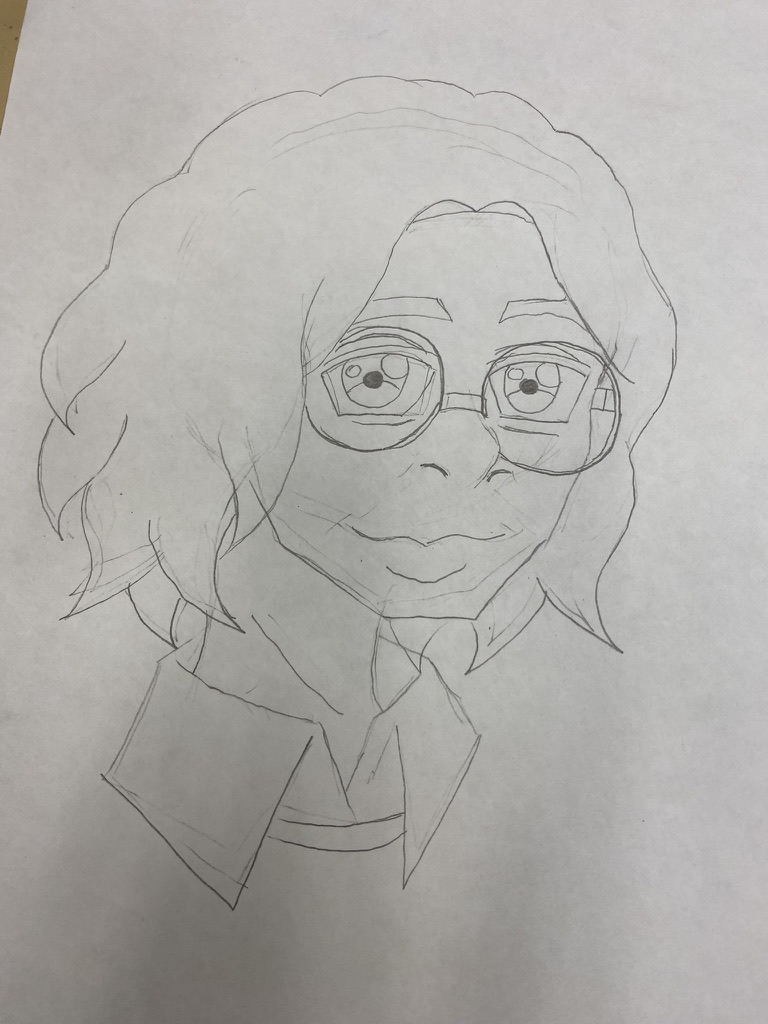
AUTHOR’S NOTE: A reader will likely understand this text with at least a 7th-grade education (age 12), and it should be easy for most adults to read.
BLACKBOARD | RESPONSE
Alexandro Diaz. 6/25/2024 I am enough. I have enough. I am in the right place, at the right time, doing…
positive statements: I am in charge of how I feel and I choose to feel happy. = * m mm…
I am enough. I have enough. I am in the right place, at the right time, doing the right thing.…
I am enough. I have enough. I am in the right place, at the right time, Doing the right thing.…
Mister Nas paused, shifting his gaze between the past and the present. “Little did I know that my childhood dream would find an echo in my adult life. Now, as an educator, my dream has become a reality. Today, as I stand before you, I’m reminded of that yearning.” He concluded with a sense of finality: We have the technology I could only imagine back then, leaving his students inspired by the story of a young dreamer who turned a simple blackboard into a symbol of boundless opportunities. “Let’s embrace this technology, learn from it, and continue exploring beyond the confines of our classroom.”
AUTHOR’S NOTE: A reader will likely understand this text with at least an 8th-grade education (age 13-14), and it should be easy for most adults to read.
Note: Feel free to Access the BlackBoard to participate in Mood Meter.
The Imaginary Odyssey to District Seventy-Five Schools
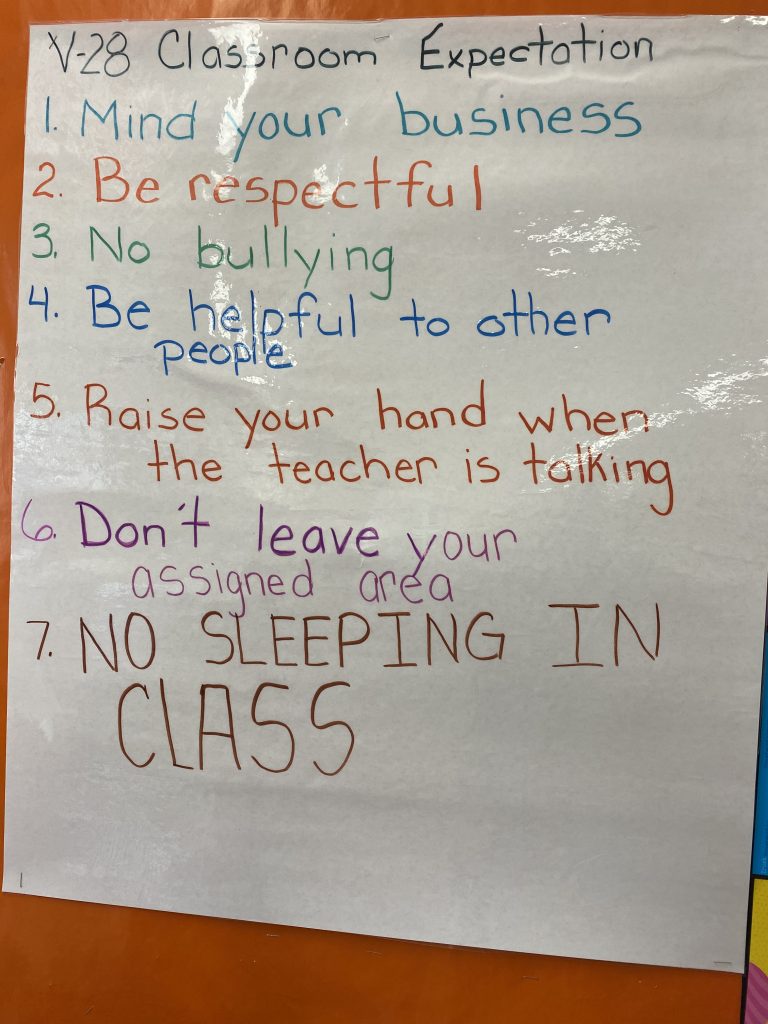
Chapter 1: “The Imaginary Odyssey of Mohi, Kontok, Barney, and Barnes: A Day in District 75”
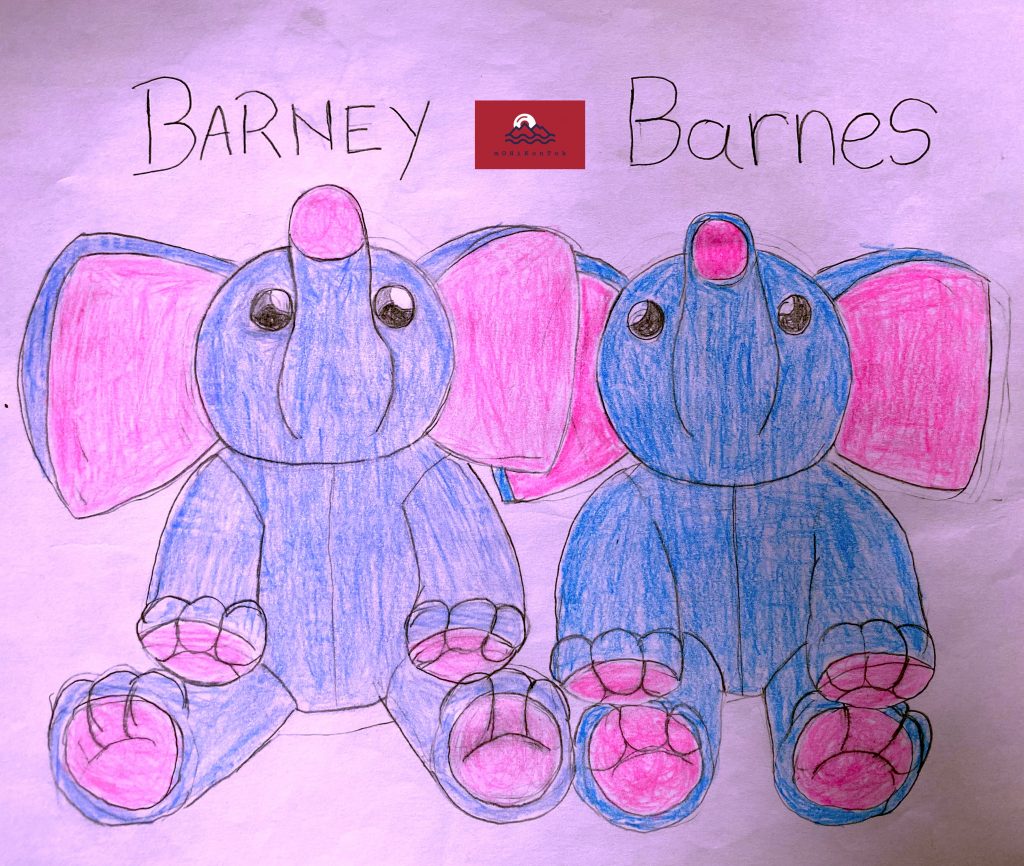
Introduction: Imagine a day in District 75, a special education classroom filled with wonder and creativity. In this heartwarming scenario, we follow the imaginary adventures of Justin the Artist and his special friends: Mohi and Kontok, the ethereal travelers from 2075, and Barney and Barnes, the playful brothers who’ve journeyed through time to 2023. Together, they embark on a remarkable journey of the mind.
Scene 1: Justin’s Imaginary Friends
As the morning sun streams through the classroom windows, Justin, a young artist with boundless creativity, sits at his desk with a sketchbook. He gazes out the window, his eyes twinkling with imagination.
Justin: (Whispers to himself) Mohi and Kontok, I wish you could meet my friends Barney and Barnes. They’re brothers who’ve traveled through time, just like you. They’d love your stories.
Scene 2: The Arrival of Barney and Barnes
Justin closes his eyes, and his imagination transports him to another realm. Suddenly, Barney and Barnes appear, shimmering into existence beside Justin. They look around, their eyes wide with curiosity.
Barney: (Whispers to Barnes) Barnes, look at this place. It’s like a magical classroom.
Barnes: (Whispers back) I wonder who Justin is and why he brought us here.
Scene 3: Sharing Stories
Justin introduces his new imaginary friends, Barney and Barnes, to Mohi and Kontok.
Justin: (Grinning) Mohi, Kontok, my friends Barney and Barnes! They’ve traveled through time, too!
Mohi: (Intrigued) It’s a pleasure to meet you, Barney and Barnes. We come from 2075.
Kontok: (Smiling) Time-travelers unite!
Barney: (Excited) This is so cool! We’ve seen some fantastic things in our time travels.
Barnes: (Eager) Do you have any stories to share?
Scene 4: The Imaginary Adventure
As the four friends exchange stories, their imaginations intertwine, creating a fantastical world where they embark on a shared adventure. They journey through time and space, meeting mythical creatures, exploring enchanted lands, and solving riddles that challenge their wits.
Justin: (With enthusiasm) Let’s go on an adventure together, a journey of the mind, where we can explore the universe in our imagination.
The Four Friends: (In unison) Adventure awaits!
Conclusion: A Day of Imagination and Friendship
In District 75, an ordinary classroom becomes an extraordinary realm where the boundaries of time and reality blur. Justin the Artist, Mohi, Kontok, Barney, and Barnes share a day filled with boundless creativity, friendship, and the limitless possibilities of the human imagination. As the day unfolds, they discover that the only limit in the fantasy world is the sky, and together, they can explore the universe and beyond.
Author’s note: The text is likely understandable to a reader with at least a 9th-grade education (age 15).
Chapter 2. “A RETELL by Mohi and KonTok.”
(Scene: An ethereal space with floating platforms where two mystical spirits, Mohi and KonTok, interact with each other.)
Mohi: (Radiating wisdom) KonTok, we must share knowledge about the nature of intelligence with those who seek to understand it.
KonTok: (Inquisitive) Indeed, Mohi. People often assume that intelligence is fixed at birth, but we must help them realize the truth.
Mohi: (Nodding) You see, intelligence comes in many forms. Howard Gardner’s theory of multiple intelligences proposes that people are not born with all the intelligence they will ever have.
KonTok: (Listening attentively) I understand. This theory suggests that each individual has unique intelligence that can be nurtured and developed.
Mohi: (Encouraging) Precisely, KonTok. It means that, over time, people can enhance their intelligence in various areas, be it verbal-linguistic, visual-spatial, logical-mathematical, or any other form.
KonTok: (Curious) So, it’s about realizing that everyone has the potential to grow and develop their intelligence throughout their lives?
Mohi: (Smiling) You’ve got it. Intelligence isn’t stagnant. It’s like a garden that can flourish with the proper care and attention.
KonTok: (Enthusiastic) I see the mission now. We must convey this message to those who believe their abilities are fixed.
Mohi: (Determined) We must help them understand that they can embrace their unique strengths and work on their weaknesses. No one is limited by what they were born with.
KonTok: (Grateful) Thank you, Mohi, for sharing this wisdom. Let’s embark on our mission to spread the understanding of intelligence and its growth.
Mohi: (Resolute) Together, we shall empower people to realize their boundless potential and unlock the doors to their growth and development.
(The scene fades as Mohi and KonTok unite their energy for the mission.)
[End of scene]
Chapter 3. “Square Station”
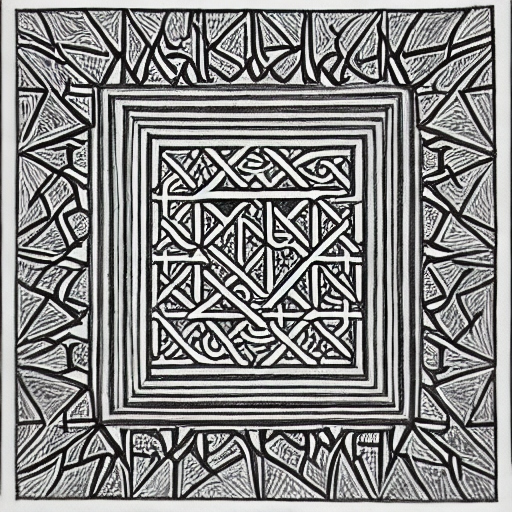
In the corner of the bustling high school, there existed a haven of learning and support known as Square Station. The classroom, a place of warmth and understanding, was thoughtfully designed to cater to these extraordinary individuals’ diverse needs and abilities.
The room was bright and welcoming, adorned with colorful posters and educational materials. The walls were lined with shelves filled with books, learning aids, and tools designed to aid the students in their educational journey. Large windows allowed natural light to flood the room, creating an atmosphere of positivity and growth.
The seating arrangement was flexible, combining desks and tables, ensuring students could choose the setup that best suited their learning style and physical requirements. Some students preferred individual workspaces, while others thrived in collaborative settings.
What makes this classroom exceptional are the dedicated educators and support staff who filled it with compassion and expertise. A team of experienced teachers, aides, and specialists work tirelessly to provide personalized instruction and assistance to each student. Their patience and commitment were the cornerstones of this nurturing environment.
A cozy reading nook in one corner of the room with various books, from classic literature to engaging picture books. This space is designed to encourage a love of reading and offers a quiet retreat for those who need a moment of calm.
MATERIAL
GRTL | CNN10 | WORKBOOK | EDPUZZLE | VOOKS
The classroom walls are adorned with the students’ artwork and projects, showcasing their creativity and individuality. These visual displays are a testament to the progress and growth within these four walls.
The classroom was equipped with technology that catered to various needs, from adaptive devices to computer stations with specialized software. These tools allowed students to access the curriculum in a way that suited their learning styles, ensuring that no one was left behind.
The most remarkable aspect of this classroom is the sense of community and belonging it fostered. The students support each other, celebrate each other’s achievements, and learn from one another. It is a place where differences are embraced, and diversity is celebrated.
Students are developing their unique abilities and potential in this special education classroom. It is a space where challenges are met with determination, triumphs are celebrated with joy, and the learning journey is indeed a shared and cherished experience.
Narrator: Square Station is the meeting place of all realms. The class is transitioning to the cafeteria for breakfast.
(Setting: A school cafeteria, with students in line. Mohi and KonTok, two spirits, are standing together, observing the students and conversing.)
Mohi: (Observing the students) KonTok is an eclectic group of students. Their unique strengths shine through in different ways.
KonTok: (Nods) Indeed, Mohi. Howard Gardner’s theory about multiple intelligences reminds us that every student has a unique set of abilities and potential waiting to be unlocked.
Mohi: (Smiling) Take verbal-linguistic intelligence, for instance. Those students, skilled in language, have a gift for words, whether speaking, writing, or even storytelling. Their capacity to influence and persuade is something to behold.
KonTok: (Reflecting) Yes, and that’s a beautiful form of intelligence. It’s a reminder that communication is a powerful tool, and with practice and dedication, they can harness their gift to make a difference.
Mohi: (Turning their attention) And then there are those with visual-spatial intelligence. They have the unique ability to visualize objects in three-dimensional space, a skill instrumental in design and engineering.
KonTok: (Impressed) It’s a talent that allows abstract visualization, paving the way for innovation. Every student in this line has their path shaped by their unique strengths and talents.
Mohi: (Empathetic) But let’s not forget those needing extra support. Not all strengths are immediately apparent. It’s our responsibility to identify their needs and provide them with the tools and encouragement to thrive.
KonTok: (Agrees) Indeed, Mohi. Our role as spiritual teachers is to nurture the apparent talents and foster an environment where every student can flourish. We empower young souls to reach their full potential by understanding and embracing these multiple intelligences.
(They continue to observe the students, ready to guide and support each one on their journeys of growth and self-discovery.)
Chapter 4. Lesson Plan writing for Music to Save Earth
(In a classroom bathed in soft, warm light, a teacher, Mrs. Thompson, stands at her desk, her fingers poised over a laptop keyboard. Her eyes are fixed on a lesson plan, and she is deep in thought, reflecting on the critical aspects of her lesson. Unbeknownst to her, Mohi and KonTok, two ethereal figures representing wisdom and insight, watch silently from the shadows of the classroom.)
Mrs. Thompson: (Murmuring to herself) Let’s make this lesson on social topics count. We’re tackling racism, antisemitism, homophobia, transphobia…
(Mohi and KonTok exchange knowing glances. They’ve come to offer their guidance and expertise.)
KonTok: (In a whisper, addressing Mohi) A noble endeavor, addressing these issues. These young minds are our hope for a more enlightened world.
Mohi: (Nodding) True, KonTok. Let’s see how Mrs. Thompson goes about it.
(Mrs. Thompson’s lesson plan continues to evolve.)
Genres | Reading| Writing | Scholarship | ASL | Unique Word Search
Mrs. Thompson: (Thinking aloud) First, an introductory lesson to provide context. Students need to understand the history and impact of these biases. We’ll delve into historical events, stories of perseverance, and the importance of empathy.
(Mohi offers a nod of approval.)
KonTok: (Whispering) A strong start, providing a foundation of knowledge is crucial.
(Mrs. Thompson proceeds to a different section of the plan.)
Mrs. Thompson: (Contemplating) I’m considering including case studies and personal narratives so students can relate to authentic experiences. They need to see the human side of these issues.
(Mohi smiles, pleased with this suggestion.)
Mohi: (Whispering to KonTok) Stories connect us all. They break down barriers and allow empathy to flourish.
(KonTok adds a gentle nod of concurrence.)
Mrs. Thompson: (Confident) We’ll foster classroom discussions. Healthy dialogue is critical. It’s a safe space for students to express their thoughts and concerns.
(KonTok acknowledges the importance of open conversation with a subtle nod.)
KonTok: (Softly) Encouraging open discourse, a commendable approach.
(Mrs. Thompson continues reviewing her plan.)
Mrs. Thompson: (Resolute) We’ll also include projects and assignments. It’s vital for students to actively engage with these topics and not just passively absorb information. Hands-on learning is impactful.
(Mohi leans toward KonTok, affirming the teacher’s comprehensive approach.)
Mohi: (Whispering) Action, KonTok. Learning is most effective when it’s not confined to textbooks but experienced in the real world.
Mrs. Thompson: (Reflecting) I want students to carry these lessons forward. It’s not about a single class; it’s about lifelong learning. We’ll introduce initiatives where they can contribute to the community and advocate for change.
(KonTok casts a reassuring glance at Mohi.)
KonTok: (Whispering) She understands that the ripples of these lessons can transform societies over time.
(Mrs. Thompson takes a deep breath, feeling confident about her lesson plan.)
Mrs. Thompson: (Determined) This lesson plan, I believe, will equip them with the tools they need to challenge biases, confront injustices, and spread the message of tolerance.
(KonTok and Mohi exchange approving nods before quietly fading into the shadows, their mission to guide and inspire accomplished.)
[End of scene]
Chapter 5. Respect different opinion
Characters:
- Emily: A 12-year-old student with a keen interest in science and a kind heart. She’s known for her curiosity and desire to understand the world.
- Daniel: A 13-year-old student who loves sports, mainly soccer. He’s enthusiastic, outgoing, and highly competitive but has a good heart beneath his competitive exterior.
- Sophia: A 12-year-old student who enjoys reading and writing poetry. She’s empathetic and caring, often the voice of reason among her friends.
- Mr. Roberts: The school counselor of District 75. He’s experienced and passionate about helping students navigate their emotions and interpersonal relationships.
Counselor’s Room
(The counselor’s room is a welcoming space with colorful posters on the wall promoting unity and respect. A round table with chairs is set up for group discussions.)
Mr. Roberts: (Sitting with Emily, Daniel, and Sophia) Thank you for joining me today. I wanted to talk about something essential: the concept of “Choitonno.” It’s a term from Bangla that embodies the idea of treating all individuals equally and with dignity, recognizing our shared humanity. We must remember that our society is above all else.
Emily: (Curious) What does it mean, Mr. Roberts?
Mr. Roberts: Great question, Emily. It means that, as humans, we should always prioritize being respectful, understanding, and empathetic towards one another. No matter our differences, we’re all part of the same human family.
Daniel: (Nods) I get it, Mr. Roberts. It’s like treating everyone the way you want to be treated.
Mr. Roberts: Exactly, Daniel. We recently had a minor bullying incident on the playground. It’s essential to understand that when we treat others poorly, we’re not embracing “Choitonno.” Instead, we’re going against the principle of recognizing our shared humanity.
Sophia: (Concerned) What happened on the playground?
Mr. Roberts: A student was teased by another because of their interests in science, poetry, and writing. This is where we can apply “Choitonno” to our everyday lives. Emily, Daniel, and Sophia, can we change the outcome and ensure this doesn’t happen again?
Emily: (Determined) I think we can, Mr. Roberts. We should make an effort to understand each other’s interests and respect them.
Daniel: (Grinning) That soccer game would be more fun if we had someone to explain the science of those crazy ball spins.
Sophia: (Thoughtful) We can have a corner in the playground for reading and sharing our poems. We can embrace our differences and even learn from them.
Mr. Roberts: (Proud) That’s wonderful, all of you. This is precisely what “Collaboration” encourages. We can connect with others, show empathy, and establish meaningful relationships that set us apart. While technology and progress are essential, they should always enhance our human interactions and not replace them.
(The students nod in agreement, realizing that understanding and embracing each other’s unique qualities is a beautiful way to celebrate their shared humanity.)
Mr. Roberts: (Smiling) Well done, you three. Our school is a place where “Collaboration” thrives.
(The students leave the counselor’s room, ready to promote unity, understanding, and respect among their peers.)
[End of scene]
Chapter 6. Special Education High School Classroom

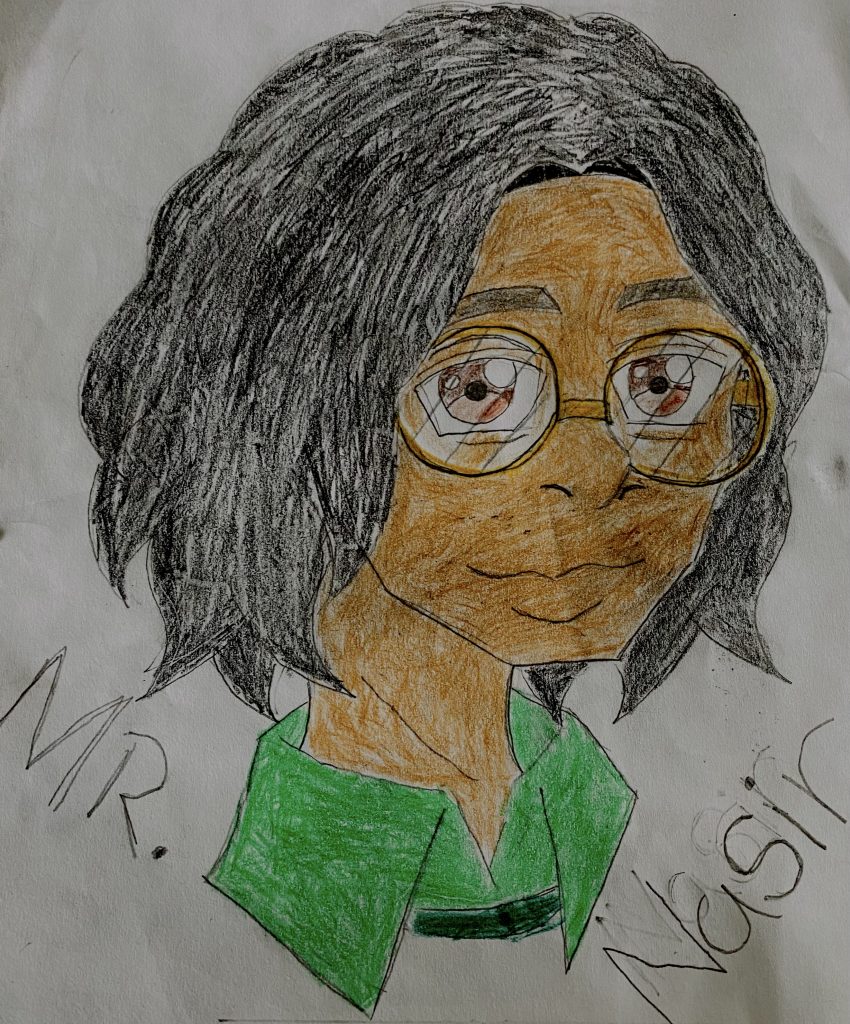
Characters:
- Mister Nas: The substitute teacher.
- Artistic Student (Tim): The student who wants to make animations.
- Principal Dr. Gore: The school principal.
Setting:
A classroom in a high school, New York, August 2022.
(Mister Nas is assisting a student, Tim, with his animation project. Tim looks a bit overwhelmed and unsure about his script.)
Mister Nas: (Encouraging) Tim, you’re passionate about animation. What’s holding you back with your script?
Tim: (Slightly frustrated) Well, it’s just… I want it to be perfect and keep second-guessing everything I write.
Mister Nas: (Understanding) I understand; we all want our work to be perfect. But sometimes, striving for perfection can paralyze our creativity. How about we take a different approach? Let’s focus on creating something exciting and then refine it.
Tim: (Curious) How do I do that?
Mister Nas: (Supportive) We’ll brainstorm ideas for your animation, which is just a basic outline. And remember, it doesn’t have to be set in stone. We can always make changes later. The important thing is to get started.
(Mister Nas and Tim spend some time brainstorming ideas for the animation, and Tim’s face lights up as he starts jotting them down.)
Tim: (Excited) This is already much better than I had before. Thanks, Mister Nas!
Mister Nas: (Smiling) I’m here to help, Tim. And if you ever need extra time to work on your project, just let me know. I believe in your talent.
Tim: (Grateful) That means a lot to me. You’re the best, Mister Nas.
(Principal Gore, passing by the classroom, notices the positive interaction.)
Principal Gore: (Impressed) Seeing such great rapport between teachers and students is beautiful. Keep up the excellent work, both of you.
(Mister Nas and Tim exchange a smile, inspired to continue working on the animation project with newfound confidence.)
[End of scene]
This scene showcases Mister Nas helping Tim gain confidence in his animation project by focusing on creativity over perfection and offering support. It emphasizes the importance of mentorship and guidance in student development.
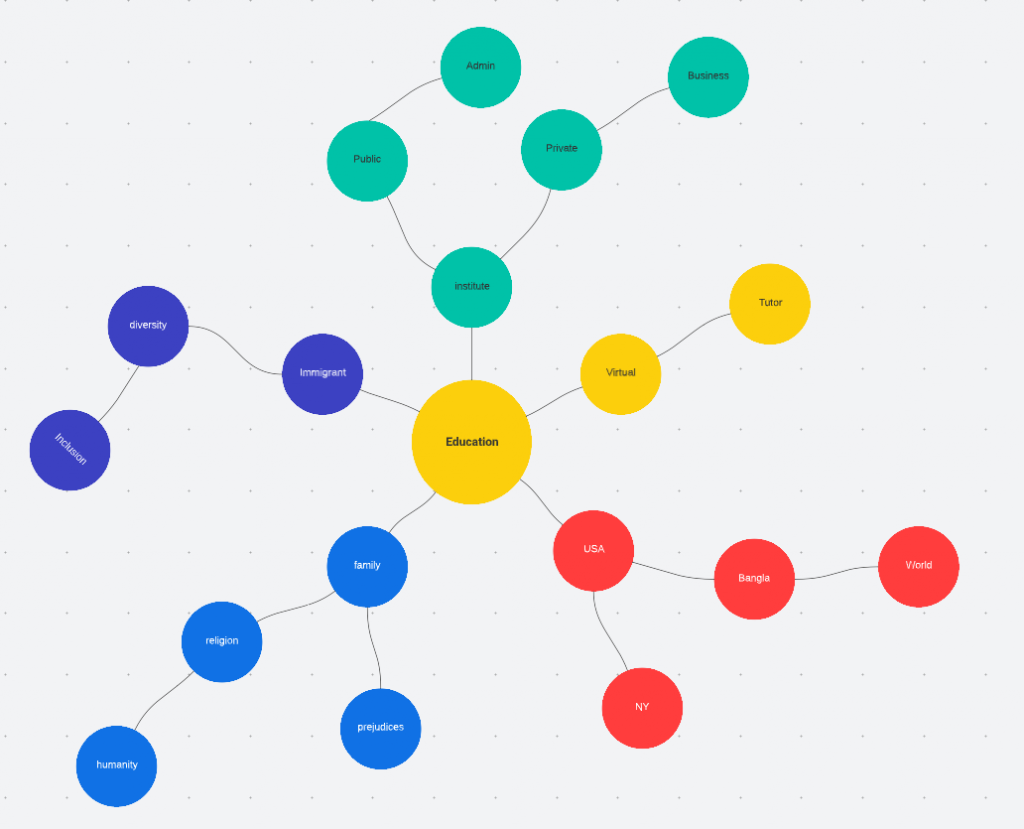
Chapter 7. Morning Meeting in Classroom
Characters:
- Mr. Nas: The enthusiastic teacher.
- Justin: A curious and active student.
Setting:
A New York City public school classroom.
Scene: A New York City Public School Classroom
(The classroom is filled with students, and Mr. Nas stands at the front, ready to engage his class in an interactive activity.)
Mr. Nas: (Excited) Good morning, everyone! I hope you’re all ready for some fun learning today. Now, let’s start with a bit of exercise.
(Mr. Nas glances at the clock on the wall.)
Mr. Nas: (Prompting) At 10 am, the temperature is…
(He pauses, looking at the students for an answer.)
Class: (In unison) 49 degrees Fahrenheit!
Mr. Nas: (Clapping) Excellent! You all nailed it! (Smiling) Good job, class.
(Mr. Nas then turns his attention to Justin.)
Mr. Nas: Justin, you’ve been doing great today. How about you help me with the following question?
Justin: (Eager) Sure, Mr. Nas!
Mr. Nas: Wonderful. Here’s your task. Please call a friend and inquire about the time of sunset today.
(Justin quickly takes out his phone and dials a friend’s number. He listens carefully.)
Mr. Nas: (Teasing) Justin, remember to listen to the answer this time, okay?
(The class chuckles, and Justin grins while talking on the phone.)
Justin: (On the phone) When is the sunset today?
(He listens to his friend and then turns to Mr. Nas with a confident smile.)
Justin: (Proudly) Sunset is at 7:10 pm, Mr. Nas!
Mr. Nas: (Impressed) Fantastic, Justin! You listened well. (Explaining) See, class, it’s essential to ask questions and be attentive to the answers.
(Mr. Nas takes a moment to connect the lesson with real-life experiences.)
Mr. Nas: (Thoughtful) And, remember, students, it’s crucial to meet our basic needs before we can entirely focus on learning and expanding our minds. Just like a good breakfast prepares you for a day of learning.
(The students nod in understanding.)
Mr. Nas: (Inspired) We often discuss Maslow’s hierarchy of needs theory. It reminds us that learning flourishes when we’ve addressed those fundamental requirements.
(Mr. Nas takes a step closer to his students, emphasizing the point.)
Mr. Nas: (Passionate) Our basic needs might differ from person to person. It could be a healthy meal, a good night’s sleep, or feeling safe and loved. So, when we support each other and create an environment where these needs are met, we can truly learn and grow together.
(The students absorb the lesson with great interest.)
Mr. Nas: (Warmly) So, let’s continue this journey of learning and self-discovery. And remember, learning is even more fun when we do it together.
(The classroom is filled with smiles, and the students feel inspired as they embark on their educational journey.)
[End of scene]
In this classroom scenario, Mr. Nas engages his students in an interactive activity and teaches them the importance of meeting basic needs before focusing on learning. Justin learns to listen attentively and actively participate in class discussions. The scene emphasizes the supportive learning environment in a New York City public school.
Chapter 8. Get learners ready to learn.
Characters:
- Mr. Nas: The enthusiastic teacher.
- Justin: A curious and active student.
- Lisa: A friendly and outgoing student.
- Sam: A studious and observant student.
- Ella: An empathetic and caring student.
Setting:
A New York City public school classroom.
Scene: A New York City Public School Classroom – Part 2
(The classroom buzzes with energy as Mr. Nas prepares to continue the interactive activity.)
Mr. Nas: (Eager) Great job, everyone! You’re all doing fantastic today. Let’s take our game to the next level. We will continue our call game, but I want more of you to participate this time.
(Justin, Lisa, Sam, and Ella eagerly raise their hands to join the activity.)
Mr. Nas: (Encouraging) Excellent! Alright, Justin, let’s start with you again. You can call a friend, but remember, we’re not using our phones in class. It’s all about practicing good old-fashioned communication. So, call out your friend by name and ask, “How are you feeling, and why?”
Justin: (Enthusiastic) Sure thing, Mr. Nas!
(Justin takes a deep breath and then calls out loudly.)
Justin: (Calling) Sam!
Sam: (Surprised) Me?
Justin: (Grinning) Yeah, you, Sam. So, how are you feeling, and why?
Sam: (Thoughtful) Well, I’m feeling pretty good today, and it’s because I finally finished reading that book I’ve been into for weeks. It’s a great feeling of accomplishment.
Mr. Nas: (Appreciative) Wonderful, Sam! See how sharing our feelings can bring positivity? (To Lisa) Alright, Lisa, you’re up!
Lisa: (Excited) I call Ella!
Ella: (Smiling) Hey, Lisa! How are you?
Lisa: (Cheerful) I’m feeling super happy today. It’s because I got an ‘A’ on my math test and didn’t expect it!
Ella: (Proud) That’s amazing, Lisa! You worked hard for it.
Mr. Nas: (Pleased) Great to see that support, Lisa and Ella. (To Ella) Now, you can call someone Ella.
Ella: (Gentle) I call Justin.
Justin: (Curious) Me again? Alright, Ella, how are you feeling?
Ella: (Caring) I’m feeling a bit worried. My dog’s not been well lately, and it’s been on my mind.
Justin: (Sympathetic) I hope your dog gets better soon, Ella. We’re here for you.
Mr. Nas: (Appreciative) Well done, Ella and Justin. You’re showing compassion, an excellent part of our basic needs. We’re all connected and looking out for each other.
(The game continues with more students participating, and the classroom is filled with warmth and camaraderie.)
[End of scene]
In this extended classroom scenario, students engage in a call game where they ask their friends how they feel and why. This activity encourages positive communication, empathy, and a supportive classroom environment, emphasizing the importance of meeting basic emotional needs for effective learning.
Chapter 9. Power of Arts
Characters:
- Mr. Nas: The teacher with a mysterious predicament.
- Justin: The student with a unique artistic ability.
Setting:
A school hallway, a classroom, and a hair salon in New York City.
Scene: A Mysterious Manipulation
(The morning meeting ends, and Mr. Nas continues with his day, teaching students with different abilities. The classroom is buzzing with positive energy as they talk about Ramadan.)
Mr. Nas: (Smiling) Thank you for sharing your good wishes for Ramadan. Let’s make sure we have a wonderful day today.
(He leaves the classroom to lead students to the upstairs gym for physical education. As he walks through the hallway, his thoughts wander to his father and the importance of literacy. Eventually, he drops off the students with Mr. Coach and returns to the classroom to prepare for the next lesson.)
Transition to the Salon:
(Later, during a break between classes, Mr. Nas visits a salon to get a haircut. He walks to the salon and notices it’s open, but no employees are in sight. Curious, he decides to come back later.)
Back in the Classroom:
(Mr. Nas returns to the classroom and continues his preparations. As he reviews his day’s schedule, his eyes fall on the sketch Justin gave him.)
Mr. Nas: (Muttering) Justin’s drawing… Could it be affecting my haircut?
(He remembers the warning from Justin about looking like the portrait in the drawing if he doesn’t trim his hair. Mr. Nas pulls out his iPhone and finds the digital sketch that Justin had given him. He stares at the image, focusing on the hair.)
Mr. Nas: (Confused) That’s it! Justin’s sketch… It looks just like…
(He realizes that the lock of hair in the drawing resembles his hair, even the way it’s been colored in with Justin’s pencils. His gaze shifts between his hair and the sketch, growing increasingly bewildered.)
Mr. Nas: (Suspicious) Could Justin’s art have… power over reality?
(His mind races with questions, unsure how to proceed with this newfound revelation.)
[End of Scene]
In this mysterious scene, Mr. Nas contemplates the connection between Justin’s sketch and the strange events at the salon. The power of art to manipulate manifestation leaves Mr. Nas bewildered and curious, setting the stage for an intriguing storyline.
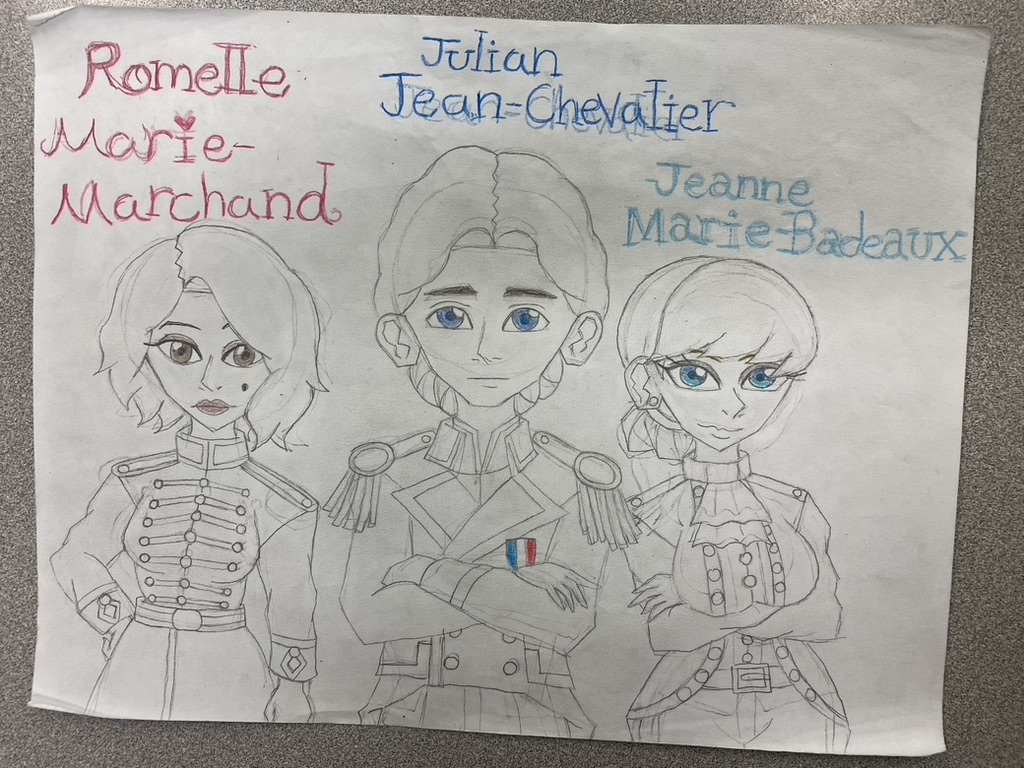
Chapter 10. Threads of Realms
Date: Aug 20, 2022
Today, Justin shared a fascinating piece of his artistic world with me. He presented a drawing featuring three girls from different anime cartoons dressed in the latest fashion trends from 1769 in France. Romelle Marie-Marchand, born in August 2002, is known as a cat girl. Julian Jean-Chevalier, born November 20, 2002, has intriguing connections with the “Spies of Heroes” and the “Positive Lovely Squad.” Lastly, Jeanne Marie-Badeaux, a former “Spies of Heroes” member, holds a reputation as a French female troublemaker.
Justin’s artistic endeavor prompted a thoughtful question from him: “Mr. Nas, do you believe in characters?” This question echoes the essence of storytelling and its significance in our lives. The events unfolding in stories, whether through literature or cartoons, are inextricably connected to events elsewhere. Justin understands that comics offer a unique and artistic lens through which global news can be understood and shared. Educators like us must appreciate the depth and breadth of our students’ perspectives in the ever-evolving education landscape.
Reflecting on John Dewey’s profound philosophy, I’m reminded that education isn’t just a preparation for life but life itself. Every student is unique, and what resonates with one may not resonate with another. Providing a high-quality education tailored to their needs is a constant challenge and a rewarding journey. Incorporating storytelling into the learning process effectively ensures that we transmit knowledge and nurture creativity, curiosity, and understanding.
In storytelling, the tale of Shooshoo, the talking cat, stands out as a timeless narrative. It has inspired various versions passed down through generations, including one I retold and rewritten by our creative and talented student, Abbi.
(Mr. Nas pauses, reflecting on the diversity of thought, experiences, and stories within his classroom, and closes his diary with anticipation for the exciting learning journey ahead.)
[End of Diary Entry]
Chapter 11. English Language Art
Scene: An ELA Classroom
Mr. Nas: (Addressing the class) Everyone, settle down. Today, we will explore an exciting folktale, and I want your active participation. Let’s dive into “Shooshoo,” a French Canadian folktale. As I read it, I think about the characters, their actions, and the lessons we can learn from their story.
(Students attentively sit at their desks, ready to listen.)
Mr. Nas: (Begins reading the story) “Once upon a time, in a village in Quebec, there lived a woman named Tonte Odette…”
Students: (Engaging with the story, listening closely)
Mr. Nas: (Continues reading the story, adding vivid descriptions) “She was cautious when wasting resources. Tonte always kept a pot of boiling water on her stove with a few cabbage leaves…”
Students: (Nodding in understanding)
Mr. Nas: (Continues reading with expressive tone) “On Sundays, she would bake bread. If the bread got stale by Thursday, she would dip it in the soup. This way, she never had to throw anything away.”
Students: (Whispering and sharing their thoughts)
Mr. Nas: (Narrating the part where Pierre La Blanc arrives) “While Tonte Odette was knitting, a stranger knocked on her door. She opened it to find an older man with a long beard, a feather in his hat, a red checkered shirt, and a sash…”
Students: (Visualizing the scene)
Mr. Nas: (Sharing the dialogue between Tonte Odette and Shooshoo) “Shooshoo suggested, ‘Let him have some soup; he seems hungry.’ But Tonte Odette objected…”
Students: (Engaging in a discussion)
Mr. Nas: (Continues reading, highlighting the talking cat) “However, after hearing the talking cat’s advice, she relented and offered Pierre food.”
Students: (Intrigued by the story)
Mr. Nas: (Narrating the part where another stranger arrives) “One day, a stranger arrived at her doorstep and inquired if Pierre LaBlonc was present…”
Students: (Curious)
Mr. Nas: (Bringing the story to a conclusion) “To err is human. To edit is divine.”
Students: (Reflecting on the story and its message)
Mr. Nas: (Smiling) All right, students, what do you think about the level of Shooshoo? How did Tonte Odette’s perception change? What lessons can we draw from this tale?
Students: (Eager to share their thoughts)
Mr. Nas: (Encouraging) Remember, it’s a story about trust, appearances, and the value of second chances. Think about how these themes apply to our lives.
Students: (Participating actively in the discussion)
Mr. Nas: (Concluding) How about we remove our creative hats? Let’s illustrate critical scenes from the story and discuss what messages we can convey through our artwork.
Students: (Enthusiastically preparing their art supplies)
Mr. Nas: (Pleased with the students’ engagement) Great! Let’s bring this story to life through art and conversation. The power of storytelling, my dear students, connects us across time and place.
[The classroom buzzes with creative energy as students begin illustrating scenes from the folktale and discussing the moral lessons of trust and appearances.]
(The scene concludes with the students actively participating in a creative and educational discussion about the story of Shooshoo.)
Chapter 12. Support equal access (A Poem)
In the tapestry of life, diverse threads entwine,
A world of colors, cultures, and thoughts so fine.
Hungry, we seek balance, unity’s embrace,
In a realm where all cultures find their rightful place.
Let us understand diversity’s grand design,
And accept the different, the unique, the divine,
Respect for varied voices, a chorus that’s true,
In this symphony of life, each perspective is due.
Through food and culture, our spirits align,
Harmonious choices that can intertwine,
To lower hypertension, let’s find the way,
Embracing diversity, hearts, and minds sway.
For education today needs a feast so grand,
Nutrients of food and culture hand in hand,
In the garden of learning, let’s tend to each seed,
A balanced, inclusive world is what we all need.
Yet some may not grasp this concept’s decree,
Denying those who envision what could be,
They call them “crazy,” those who seek the truth,
But Baul Jalal’s wisdom is our eternal youth.
In Maslow’s pyramid, desires hold the key,
To a hunger for wisdom as wild as the sea,
Three times we may eat and yet still feel the gnaw,
For it’s the protein of knowledge that we truly draw.
Equal birthright, we claim, an undying plea,
To be respected, revered, and forever free,
For the Baul reminds us, the path must be clear,
In the journey to knowledge, we must all draw near.
Segregation, they warn, leads to woes we can’t bear,
Walking backward, it’s clear the weight hard to bear,
Denying education, a birthright so dear,
Brings misfortunes that haunt us, ever so near.
With unity and respect, let our spirits combine,
A world filled with color, in which we all shine,
No tension, no anxiety, no stress shall we face,
For in embracing diversity, we’ll find our rightful place.
Chapter 13. Clean Music for Schools
Education is Life
Characters:
- Rafi: An immigrant who recently discovered his educational qualifications were equivalent to a bachelor’s degree in the USA.
- Principal Gore: The school’s principal has offered Rafi the substitute teaching position.
- Emily: A 6th-grade student.
Setting:
A school’s main office, where Rafi receives news of his new teaching job.
(Rafi is nervously waiting in the school’s main office. Principal Gore enters and approaches him.)
Principal Gore: (Smiling) Rafi, I have great news for you. After reviewing your qualifications and credentials, we’d like to offer you a teaching position at our school.
Rafi: (Ecstatic) Really? That’s amazing! Thank you so much!
Principal Gore: Your background and skills will make you a valuable addition to our team. We’re excited to have you with us.
Rafi: (Grateful) I can’t express my gratitude for this opportunity. I’ve been eager to start my career in education, and this means the world to me.
Principal Gore: We’re eager to have you on board. You’ll be filling in for Mrs. Johnson’s 6th-grade class. It’s an excellent place to start, and the students are lovely.
Rafi: (Determined) I’ll do my best. I’m committed to being the best teacher I can be.
Principal Gore: That’s the spirit we love to see. Your dedication and enthusiasm will make a difference in our students’ lives.
(Rafi’s excitement shines through as he envisions the impact he can have on the students he’ll be teaching.)
[End of scene]
This scene portrays Rafi’s eagerness and enthusiasm as he learns of his new teaching job and the principal’s appreciation of his dedication and background. It’s a moment of professional development and new opportunities in his life.
Chapter 14. Education is the cornerstone of freedom.
(Setting: The teacher’s lounge during break time. A teacher and a teacher assistant converse while Mohi and KonTok, invisible yet observant, listen.)
Teacher: (Engaging in the conversation) It’s remarkable how every student brings their unique strengths to the classroom. Today, I was explaining to the students about visual-spatial intelligence, the ability to envision objects in 3D space, and how it’s particularly beneficial in fields like design and engineering.
Teacher Assistant: (Nods thoughtfully) Indeed, it’s fascinating. These unique talents are like puzzle pieces that fit together to create a diverse and dynamic learning environment. It’s what makes teaching so rewarding.
(As they talk, Mohi and KonTok listen, invisible yet present.)
Teacher: (Changing the subject) Speaking of learning environments, addressing an issue that affects education more than we realize is critical.
Teacher Assistant: (Curious) What do you mean?
Teacher: (Serious) I’m talking about the issue of teacher prejudices affecting education. Studies have shown how teachers often unconsciously telegraph their biases in the classroom. This has led some researchers to believe that children of color and white children in the same classroom effectively receive different educations. These biases can influence even something seemingly simple, such as readiness to move to the next grade.
(As the conversation continues, Mohi and KonTok focus their attention, aware of the importance of the discussion.)
Teacher Assistant: (Concerned) That’s a serious issue. The impact on the students and their future is profound.
Teacher: (Resolute) It is. We need to raise awareness about these biases and stereotypes. Recognizing and addressing them is essential to creating a more inclusive and equitable society. Education should be a level playing field for all students.
(As the teacher and teacher assistant delve deeper into prejudice and its influence on education, Mohi and KonTok, unseen yet present, are inspired by the dedication to fostering a fair and just educational environment.)
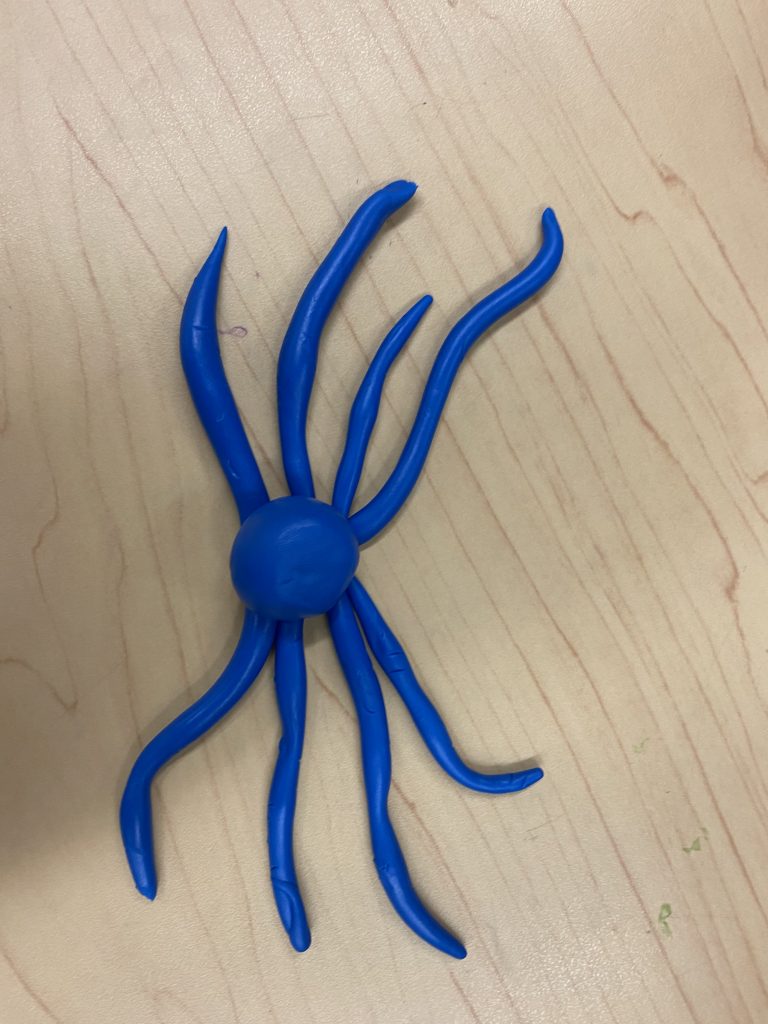
Chapter 15. Workshop: Accessibility matters
(Setting: A workshop organized by Union, attended by staff members. Mohi and KonTok are present to clarify certain matters for the readers’ better understanding.)
Workshop Presenter: (Addressing the attendees) Today, we’ve gathered here to discuss an issue of utmost importance: teacher prejudices affecting education. It’s a topic that requires our immediate attention.
Audience Member 1: (Raises a question) Could you provide an example of what you mean by teacher prejudices?
Workshop Presenter: (Explains) Let’s take an example. We often hear about “white privilege.” It’s a form of bias that can manifest in the classroom, creating an uneven learning environment. We need to address these issues in our educational institutions.
(Mohi and KonTok are present, observing the discussion, and ready to offer insight.)
Audience Member 2: (Intrigued) I’ve heard about the #USvsHate project. Can you tell us more about it?
Workshop Presenter: (Elaborating) Certainly. #USvsHate, or “US Versus HATE,” is an educator and youth-led messaging project. It’s designed to counter bigotry in schools, create welcoming classrooms, and promote inclusion and justice for all students in diverse schools and society. This project aims to unite school communities against hate, bias, and injustice. Remember, we are all part of “US.” It’s a nationwide anti-bias initiative that amplifies student voices to push back against bias, bigotry, and hate messages.
Audience Member 3: (Curious) What specific actions does the #USvsHate project recommend for schools to counter bigotry?
Workshop Presenter: (Providing insights) The #USvsHate project recommends several actions for schools to counter bigotry. It includes lessons on various topics like racism, antisemitism, homophobia, transphobia, and more. These lessons provide students with numerous opportunities to understand tolerance and promote a more inclusive and just educational environment.
(Mohi and KonTok, though unseen, are there to encourage a deeper understanding of the topic.)
Audience Member 4: (Engaged) How can we address unconscious prejudices and stereotypes?
Workshop Presenter: (Responding) Recognizing that human growth can be emotionally tied to prejudices is essential. Prejudices are often accompanied by ignorance, fear, or hatred. Being different does not mean being less. The key is to embrace diversity and respect the dignity of all humans. We must understand that these prejudices can be denied because they are often outside our awareness. Recognizing these biases is the first step toward addressing them.
(Mohi and KonTok nod in agreement, silently encouraging self-reflection.)
Workshop Presenter: (Continuing) Unconscious prejudices and stereotypes may also affect various aspects of life, including court jury deliberations and tasks requiring judgments of human character. For instance, in the case of the police, bias can influence split-second, life-or-death decisions. Tragic incidents like George Floyd’s murder and racial hate crimes demonstrate how stereotypes can have devastating consequences. So, those who argue that prejudice is not a significant problem today might be illustrating the challenges of unconscious bias.
(Mohi and KonTok, though invisible, contribute to raising awareness about the importance of addressing these deep-seated biases.)
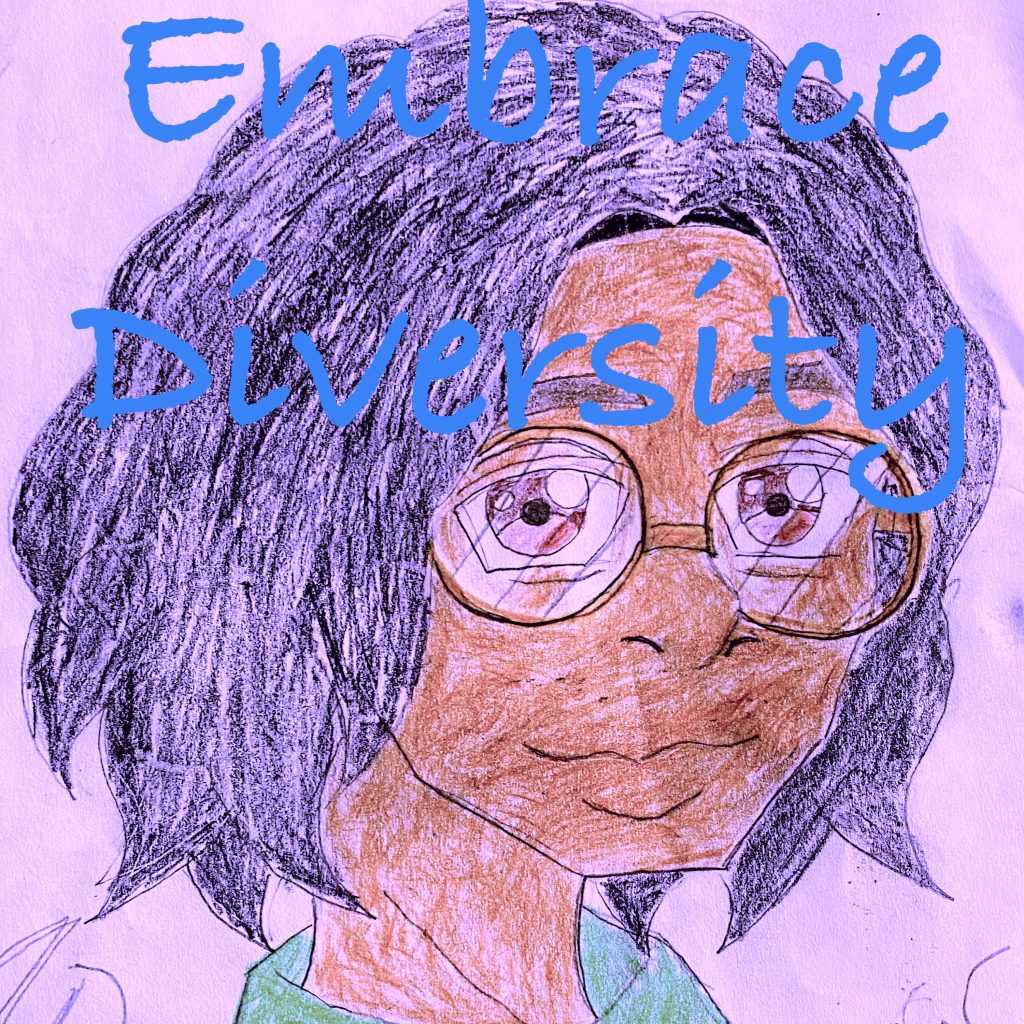
(Scene: A small, well-lit room with a desk and two chairs. A black job applicant, Mark, sits across from a white employer, Mr. Stevens, for a job interview. Mohi and KonTok are present as invisible observers.)
Mr. Stevens: (Appearing friendly but with underlying biases) Good afternoon, Mark. I’m glad you could make it today. Please, have a seat.
Mark: (Smiling, but slightly tense) Thank you, Mr. Stevens. I appreciate the opportunity to interview for the position.
Mohi: (Observing) An investigation showed that white interviewers sat farther away from black applicants than from white applicants, made more speech errors, and ended the interviews 25% sooner.
Mr. Stevens: (Seated farther away from Mark, unconsciously creating distance) Let’s get started. Tell me a bit about yourself and your qualifications for the job.
Mark: (Maintaining professionalism) Well, I have a degree in computer science and five years of experience in software development. I’ve worked on various projects, including some that align closely with the responsibilities listed for this role.
KonTok: (Observing) Such discrimination can diminish the performance of anyone treated this way, whether black, white, or brown.
Mr. Stevens: (Interrupting Mark) That’s great, Mark. But can you tell me how your English is? We have clients who prefer clear communication, you know.
Mark: (Remaining composed) My English proficiency is strong, and I’ve worked with clients from diverse backgrounds, ensuring effective communication.
Mohi: (Observing) Mr. Stevens’ underlying bias becomes evident as he makes speech errors during the interview.
Mr. Stevens: (Making speech errors) That’s good to know. So, uh, Mark, what do you think is your, uh, greatest, um, weakness in a professional setting?
Mark: (Answering thoughtfully) My greatest weakness is my reluctance to stop learning. I constantly seek ways to improve and adapt to new technologies and methodologies.
KonTok: (Observing) Mr. Stevens, due to his biases, inadvertently ends the interview 25% sooner than usual.
Mr. Stevens: (Abruptly) we’ve covered everything I needed, Mark. Thank you for coming in today.
Mark: (Surprised but professional) Oh, alright, Mr. Stevens. Thank you for your time.
Mohi: (Observing) The discrimination and bias in the interview have left Mark feeling undervalued, affecting his performance.
(The scene changes, and Mark is now talking to a friend, expressing frustration.)
Mark: (Talking to a friend) It was so uncomfortable? I felt Mr. Stevens wasn’t interested in hearing what I had to say. I was mistreated.
KonTok: (Observing) Mark’s friend listens, understanding that such biases affect the individual directly and the overall societal balance.
Friend: (Supportive) I’m sorry to hear that, Mark. Remember, diversity is essential, and it’s our collective responsibility to challenge and reject the deeper biases and injustices that persist.
Mohi: (Reflecting) The drama unfolds to reveal that addressing these biases is vital to maintaining a balanced and equitable society.
Chapter 17. The Dream Team
(On a dimly lit stage, a solitary figure, Dr. Gore, steps forward, radiating a sense of wisdom and determination. The atmosphere is heavy with the weight of stereotypes and prejudices. Dr. Gore’s voice carries the depth of knowledge.)
Dr. Gore: (Intense) Imagine a world where we are all painted with the brush of preconceived notions and misconceptions. Stereotypes, these shadows that cling to us, shaping our perceptions, are often based on nothing more than whispers of ignorance. They’re like ink blotting the canvas of our minds.
(With each word, Dr. Gore gestures, conjuring images of biased individuals struggling with the weight of their preconceptions.)
Dr. Gore: (Passionate) Like prejudice, a stereotype is an exaggerated belief, an image that doesn’t reflect the complexity of the human spirit. We let them flourish in our minds, cultivated by ideas, appearances in mass media, and sometimes even the reputations passed down through generations.
(Images of children mimicking biased behavior flash across the stage.)
Dr. Gore: (Eloquent) Stereotypes and prejudices—these twin specters—feed on each other. They reinforce our biases, shaping how we see the world.
(Dr. Gore’s voice grows more robust, casting an aura of determination.)
Dr. Gore: (Resolute) Once learned, they’re like stubborn weeds, deeply rooted in the soil of our consciousness. They resist change, even when evidence contradicts them or beckons us to see a different truth.
(Images of individuals battling against their preconceptions unfold as Dr. Gore continues.)
Dr. Gore: (Inspiring) But we can unlearn. We can challenge these stereotypes and prejudices. We can recognize the injustice they perpetuate.
( Dr. Gore’s presence brightens, symbolizing the awakening of awareness.)
Dr. Gore: (Empowering) Every school community can be a beacon of change. The #USvsHate project is our torch, a nationwide anti-bias initiative that empowers students to raise their voices against the echoes of bias and bigotry.
(Dr. Gore’s words resonate as the stage comes alive with hope.)
Dr. Gore: (Triumphant) We can defy these shadows and step into the light of understanding. Let’s build bridges where bias once erected walls.
(The stage dims, leaving Dr. Gore’s message lingering.)
[End of monologue]

Character 1 you know there something I always admired about you. Character 2 oh really? And what might that be…